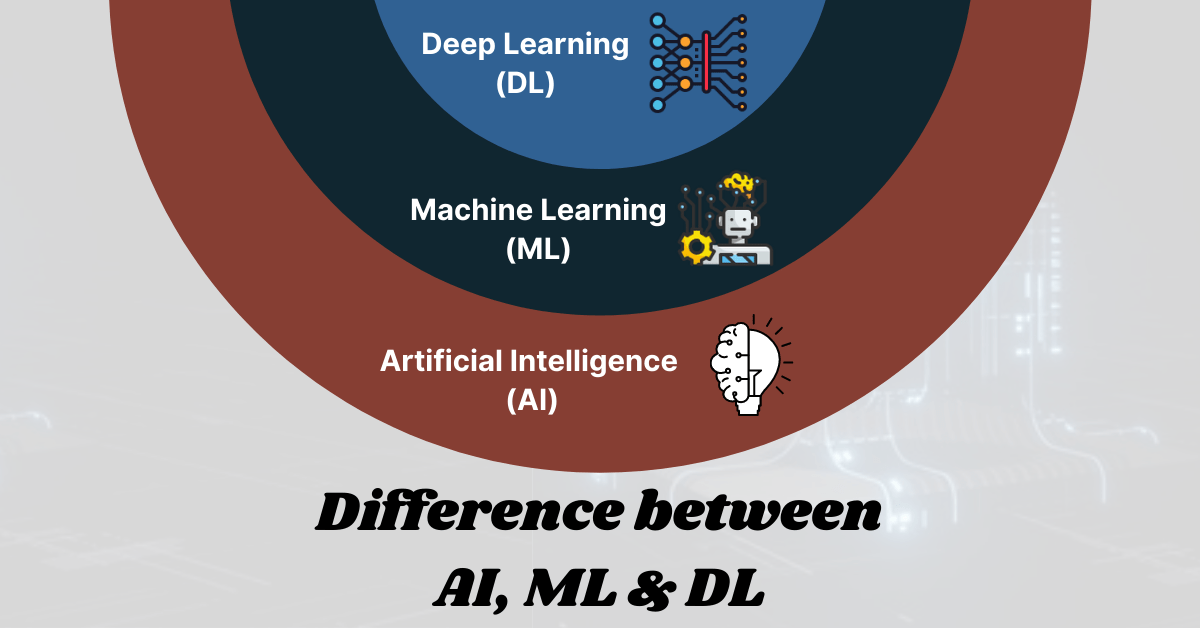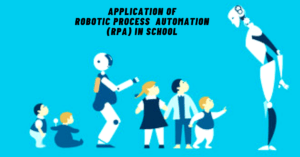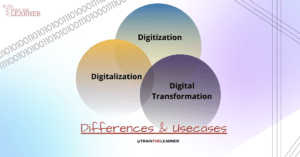Artificial intelligence (AI), Machine Learning (ML), and Deep Learning (DL) are terms that overlap, and the confusion between these terms remains. “Are artificial intelligence and machine learning the same thing?” is one of the most common Google searches.
Let us be clear about what Artificial Intelligence (AI), Machine Learning (ML), and Deep Learning (DL) are.
- Artificial Intelligence, like mathematics and biology, is a scientific discipline. It studies how to get a computer to mimic in ways like a human in different ways.
- Machine Learning is a subset of artificial intelligence (AI) that includes the techniques that allow computers to figure out things from data and offer AI applications. Different algorithms (such as neural networks) are used in machine learning to solve problems.
- Deep learning, also known as deep neural learning, is a subset of machine learning. It allows computers to tackle complex problems, which analyses many aspects using neural networks with a structure similar to the human brain system.
What is Artificial Intelligence (AI)?
Artificial intelligence (AI) is a field of computer science in which machines are designed to understand and act in the same way as humans and animals do. Regarding thinking, speech, learning, perception, and problem-solving, the standard for AI is human intellect, which is still a long way off in the future.
AI has three different levels:
Narrow AI: When a computer can execute a specific task better than a human, it is considered limited artificial intelligence. AI research is currently underway.
General AI: When an artificial intelligence achieves its general state, it can do any intellectual activity with the same level of precision as a human.
Active AI: AI is functional when it can surpass humans in various activities.
What is Machine Learning (ML)?
Machine learning is commonly known as a subset of AI. In machine learning, computers are taught to automate tasks that are too difficult or impossible for humans. Based on the study of computer programs, it is the finest tool for analyzing, understanding, and identifying patterns in data. With minimal human interaction, machine learning can make choices.
However, you will constantly hear the two names used interchangeably. The explanation for this is straightforward. Machine learning has been used to create almost all AI applications.
AI is the ultimate vision of intelligent machines. However, Machine Learning is the models, processes, and supporting technologies we have used to get to AI.
Machine Learning, when compared to artificial intelligence, uses data to feed an algorithm that can understand the relationship between the input and output. When the machine finishes learning everything, it can predict the value or the class of a new data point.
What is Deep Learning (DL)?
Deep learning is a branch of machine learning that works with algorithms based on the structure and function of the brain. Deep learning algorithms can handle a large amount of structured and unstructured data. Artificial neural networks, which allow machines to make decisions, are at the core of deep learning.
The main difference between deep learning and machine learning is how data is delivered to the machine. Deep learning networks function on multiple layers of artificial neural networks, whereas machine learning techniques usually require structured data.
The network includes an input layer that takes data inputs. The hidden layer is used to search the data for any hidden features. Then the expected output is provided by the output layer.
When to use AI, ML, or DL?
Artificial Intelligence combines enormous data sets to help machines learn patterns for future execution. Machine Learning requires less data to train the algorithm than Deep Learning. Identifying the basic structure of deep learning requires a large and diverse data set. Also, Machine Learning allows for a more quickly learned model. Training advanced Deep Learning architecture might take a few days to a week. Deep Learning has the advantage of being more accurate than machine learning. You don’t need to know which features are the most precise data representations because the neural network learned to choose the most important ones. In machine learning, you must independently decide which features to put in the model.
Conclusion
Despite their similarities, AI, ML, and DL identify quickly when correctly addressed. AI is a broad, comprehensive vision. Machine Learning is the process and tools that will bring us there. Finally, deep learning is machine learning taken to the next level, with the might of data and processing power behind it. With this in mind, you can start exploring this complex, exciting sector and determine which methods will help you.




